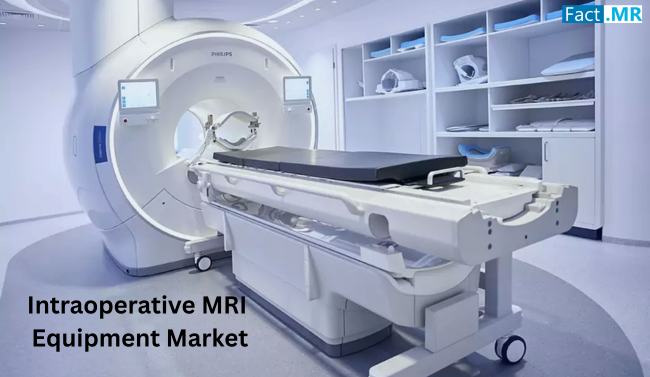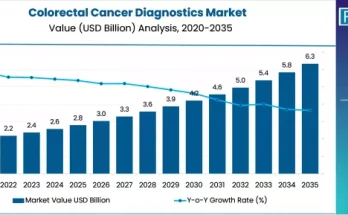As the global healthcare landscape moves toward precision medicine and advanced surgical interventions, the intraoperative MRI equipment market is witnessing steady growth. Intraoperative MRI systems provide real-time imaging during surgical procedures, enabling enhanced accuracy, reduced risks, and improved patient outcomes. With expanding applications in neurosurgery, oncology, and orthopedics, iMRI is poised to become an essential tool in modern operating rooms.
This evolution marks a significant shift in the surgical ecosystem—where real-time feedback meets high-resolution imaging, empowering surgeons to make data-driven decisions during critical operations. The adoption of intraoperative MRI equipment aligns with broader healthcare trends of technological integration, patient-centric treatment, and outcome-based performance.
Market Overview:
Intraoperative MRI equipment integrates magnetic resonance imaging systems within surgical environments, allowing surgeons to visualize soft tissues and monitor the progress of a procedure without moving the patient. This eliminates the need for post-operative imaging and re-operations, reducing complications and improving surgical accuracy.
These systems are particularly vital in neurosurgical procedures, where even a millimeter of error can lead to severe consequences. The rising prevalence of brain tumors, neurological disorders, and the growing preference for minimally invasive surgeries are driving demand for intraoperative MRI systems.
Key components of the iMRI ecosystem include high-field and low-field MRI machines, hybrid operating rooms, image guidance software, and specialized surgical tools. Together, these create a real-time feedback loop that significantly enhances intraoperative decision-making.
Regional Insights:
North America:
North America dominates the intraoperative MRI equipment market, driven by a highly developed healthcare infrastructure, strong reimbursement policies, and rapid technological adoption. The presence of key manufacturers and increasing investments in neurosurgical centers further support market expansion.
Hospitals and surgical centers across the United States and Canada are integrating hybrid operating rooms equipped with intraoperative MRI, especially in academic and tertiary care institutions. These facilities are also leading in clinical research and trials involving advanced neuroimaging technologies.
Europe:
Europe follows closely, with countries like Germany, the United Kingdom, and France at the forefront of iMRI adoption. Regulatory support, combined with a robust focus on medical innovation, fuels market growth in the region. The region’s emphasis on patient safety and precision medicine aligns well with the benefits offered by intraoperative MRI systems.
European neurosurgical associations and healthcare organizations are actively collaborating on best practices and safety protocols for iMRI-assisted procedures, enhancing standardization and efficiency across surgical settings.
Asia-Pacific:
Asia-Pacific is emerging as a high-potential market, propelled by healthcare modernization, rising healthcare expenditure, and an increasing number of neurological procedures. Countries such as China, India, Japan, and South Korea are investing heavily in advanced medical imaging technologies.
Government initiatives to enhance surgical care in urban and semi-urban hospitals and growing private sector investments are opening doors for the integration of intraoperative MRI systems in the region.
Key Trends & Forecast:
1. Rising Demand for Real-Time Surgical Imaging:
The need for intraoperative imaging is becoming increasingly critical in complex surgeries, particularly in the brain and spinal cord. Intraoperative MRI systems offer unparalleled visualization of soft tissues, enabling immediate evaluation of surgical results and the resection margin. This significantly reduces the likelihood of revision surgeries and improves post-surgical recovery.
2. Technological Advancements in MRI Design:
Ongoing innovations are making intraoperative MRI systems more compact, flexible, and easier to integrate into existing operating rooms. Portable and ceiling-mounted MRI scanners are gaining traction for their ability to provide powerful imaging without disrupting surgical workflows. Integration with AI-based navigation systems is further optimizing precision and reducing operation time.
3. Hybrid Operating Rooms on the Rise:
Hospitals are increasingly investing in hybrid operating rooms—advanced surgical suites that combine traditional OR capabilities with diagnostic imaging tools like iMRI. These facilities support complex, image-guided procedures and offer flexibility for multidisciplinary teams. The shift toward hybrid ORs is anticipated to boost long-term demand for intraoperative MRI systems.
4. Collaboration Between Imaging and Surgical Device Manufacturers:
Manufacturers are forming partnerships to develop integrated platforms that bridge imaging systems with surgical tools, robotics, and navigation software. These collaborations aim to streamline workflows, reduce intraoperative disruptions, and enhance the overall efficiency of the surgical suite.
5. Growing Emphasis on Neurosurgery and Oncology:
While neurosurgery remains the primary application area for iMRI, the technology is gaining traction in oncology, particularly for tumor resection procedures where complete removal of malignant tissue is critical. High-precision imaging during surgery aids in assessing the completeness of tumor removal and minimizing damage to surrounding healthy tissues.
Applications & End-Use Outlook:
Neurosurgery:
The most significant application of intraoperative MRI equipment is in neurosurgery. The technology allows surgeons to visualize brain structures during procedures, detect residual tumors, and avoid critical areas—resulting in better outcomes and fewer complications. This capability is particularly vital in the treatment of gliomas, pituitary tumors, and epilepsy surgery.
Orthopedic Surgery:
iMRI systems are being increasingly used in complex spinal and joint surgeries where real-time assessment of alignment and hardware placement is required. Though still an emerging field, orthopedic applications are likely to see steady growth with advancements in minimally invasive techniques.
Oncology:
Intraoperative MRI plays a crucial role in surgical oncology by assisting in the precise removal of cancerous tissues while preserving as much healthy tissue as possible. Its role is expanding in procedures involving the brain, prostate, liver, and breast.
Hospitals & Surgical Centers:
Hospitals account for the largest share of end-users, especially academic medical centers and tertiary care institutions with specialized surgical departments. These facilities have the infrastructure and resources to support the installation and use of high-cost, high-performance imaging systems like iMRI.
Ambulatory Surgical Centers (ASCs):
Although ASCs are slower in adopting intraoperative MRI due to cost constraints and space requirements, the trend is gradually changing. Technological miniaturization and modular system designs are making it feasible for certain high-end ASCs to invest in iMRI capabilities.
Challenges to Watch:
Despite the many benefits, intraoperative MRI equipment comes with challenges:
-
High Cost of Installation and Maintenance: The upfront cost, infrastructure needs, and operational expenses pose barriers to widespread adoption, especially in low- and middle-income countries.
-
Requirement for Skilled Professionals: Operating an intraoperative MRI system demands highly trained surgical, imaging, and technical staff. The shortage of skilled professionals can limit system effectiveness.
-
Magnetic Field Safety Concerns: The presence of a strong magnetic field in the operating room necessitates stringent safety protocols to avoid accidents or interference with surgical instruments and implants.
Conclusion:
Intraoperative MRI equipment is revolutionizing modern surgery by enabling real-time visualization, enhancing surgical precision, and reducing complications. As the global healthcare system leans toward minimally invasive and outcome-driven procedures, iMRI will play an increasingly vital role in shaping the future of surgical care.
With strong adoption in developed markets and growing interest in emerging economies, the intraoperative MRI market offers promising opportunities for equipment manufacturers, healthcare providers, and technology innovators alike.
Stakeholders looking to enter or expand in this space must prioritize product innovation, cost-effectiveness, and clinical training to ensure sustained growth. As intraoperative imaging becomes the gold standard in neurosurgical and oncological procedures, the market is well-positioned to transform surgical care for the better.



